| PERFECT COMPETITION | |
The Goal Of Profit
|
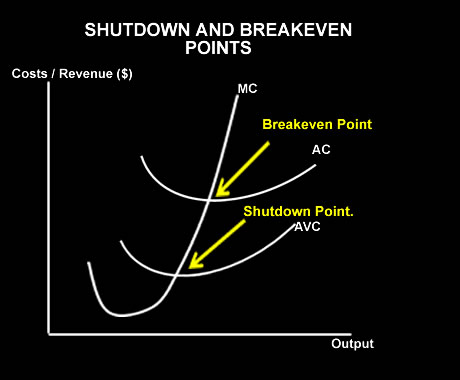 |
REVENUERevenue is the amount the seller receives from selling their output. Total revenue (TR) This is calculated by multiplying the number of units sold (Q) by their price (P). Average Revenue (AR) is the price per unit sold or Total revenue divided by the number sold. AR = TR/Q Average revenue always equals price. If the sale of one more lounge suite raised a retailers total revenue from $10,000 to $11,000 then the marginal revenue from this sale would be $1,000. |
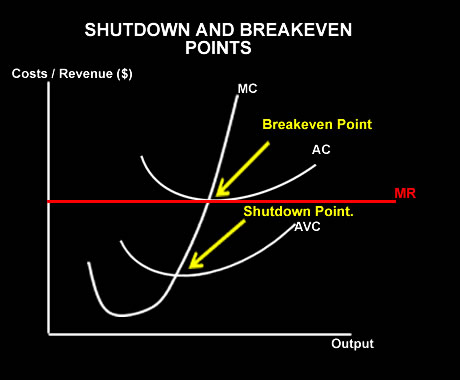 |
REVENUE AND PERFECT COMPETITION The Perfect Competitors demand curve (AR) is horizontal and therefore perfectly elastic. They can sell all they want at the market price but will be unable to have any influence over the price. |
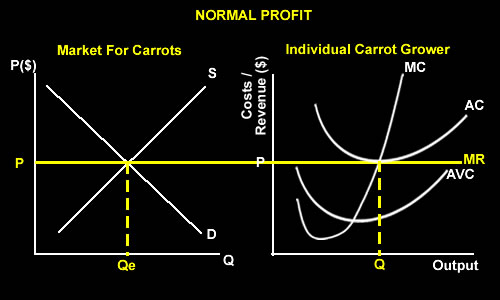 |
PROFIT MAXIMISING LEVEL OF OUTPUT Marginal Revenue = Marginal Cost Which is at point Q* on the diagram. For any output less than Q*, such as Q1, marginal revenue is greater than marginal cost. The firm will make more profits as long as the extra revenue brought in from selling the last unit of output (MR) is greater than the extra cost that is incurred in producing it (MC). |
 |
THE LONG - RUN SITUATION FOR A PERFECT COMPETITOR IS ALWAYS NORMAL PROFIT. BECAUSE THERE ARE NO BARRIERS TO ENTRY OR EXIT, FIRMS CAN EASILY ENTER OF EXIT THE MARKET. THIS MEANS THAT A NORMAL PROFIT WILL ALWAYS BE MADE IN THE LONG-RUN. |
|
Perfect Competition and SUPER NORMAL PROFIT This occurs where MR = MC is ABOVE the AC curve and so the firm is making a profit which more than covers all of their economic costs.
|
 |
In the long run a firm in perfect competition cannot make a super normal profit as the super normal profit continues other firms will enter the market and bring the price down reducing the profit level of all the firms. If a super normal profit is being made, more firms will enter the market, increasing market supply to S2. This will decrease the price to P2. |
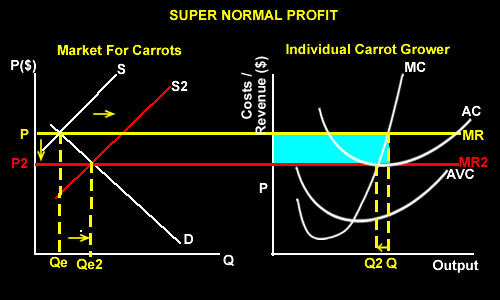 |
SUB-NORMAL PROFITThis occurs where MC = MR is below the AC curve, but above the AVC (shutdown point). The firm is making a profit, but not enough to cover ALL economic costs, including opportunity costs and so it is making a sub normal profit.
|
 |
In the long run, even if the firm is producing above the shut-down point, if firms are not making enough profit some of them will leave the market until the price increases enough so that the remaining firms make a normal profit. If a sub normal profit is being made, firms will exit the market, decreasing market supply to S2. This will increase the price to P2. |
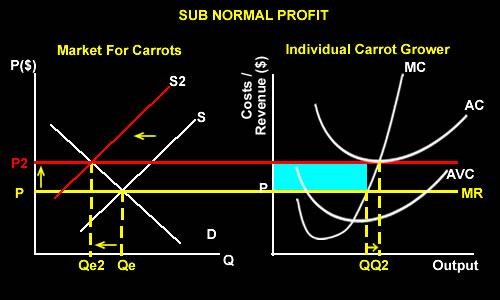 |
NORMAL PROFIT. A perfectly competitive firm will always make a normal profit in the long-run. The market equilibrium price will be at a point where all firms in the market will make a normal profit. A normal profit is where MC = MR = AC - all economic costs are being covered, including opportunity cost. |
 |